Force eTap AXS is the second-tier groupset in SRAM’s road range, a step down from the flagship Red. It's a fully wireless, 12-speed electronic groupset that inherits virtually all of Red’s tech, but weighs more and offers a lower-key finish.
Force eTap AXS is available in both 1× and 2× configurations and its components are compatible with the rest of the AXS ecosystem, including Eagle AXS mountain bike bits.
This review focuses on the 2× HRD disc brake version of Force, but much of it will be directly relevant to the rim brake variant because only the levers and brakes differ.
- SRAM Force eTap AXS launched – wireless shifting for the masses is here
- SRAM Force eTap AXS vs. Shimano Ultegra Di2
- Road bike groupsets: everything you need to know
SRAM Force eTap AXS levers and shifting
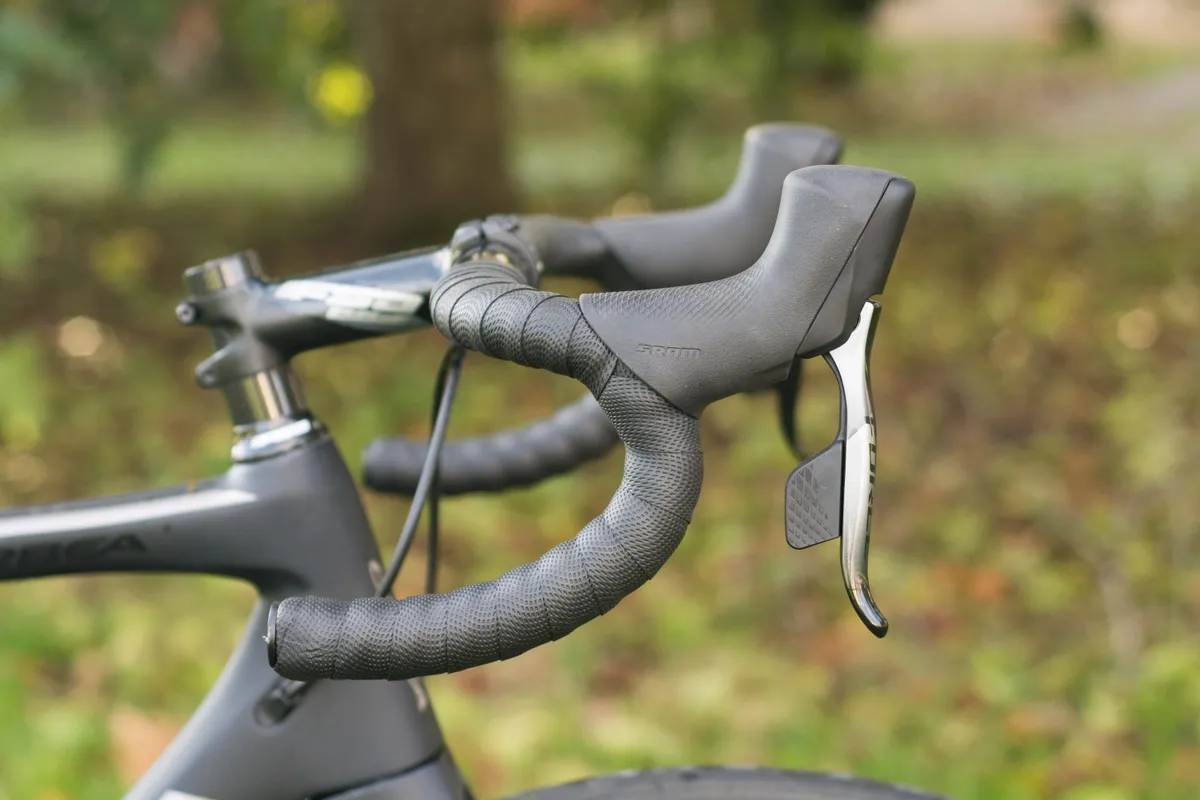
SRAM’s Force eTap AXS HRD levers have the same chunky aesthetics as the Red version, with substantial hoods housing the hydraulic master cylinders. The rim brake version is considerably less bulky.
Where Red gets carbon lever blades, Force gets plastic, and the finish is cheaper-looking as a result.
The other key difference here is that Red levers have two ports, each to connect Blip external shift buttons, while Force only gets one.
A small button and an LED on the inside of each shift paddle is used during setup to make adjustments, and each lever is powered by a replaceable CR2032 coin cell that SRAM reckons will typically last around two years.
The state of charge can be checked via the LED (it changes colour) or using the AXS app.
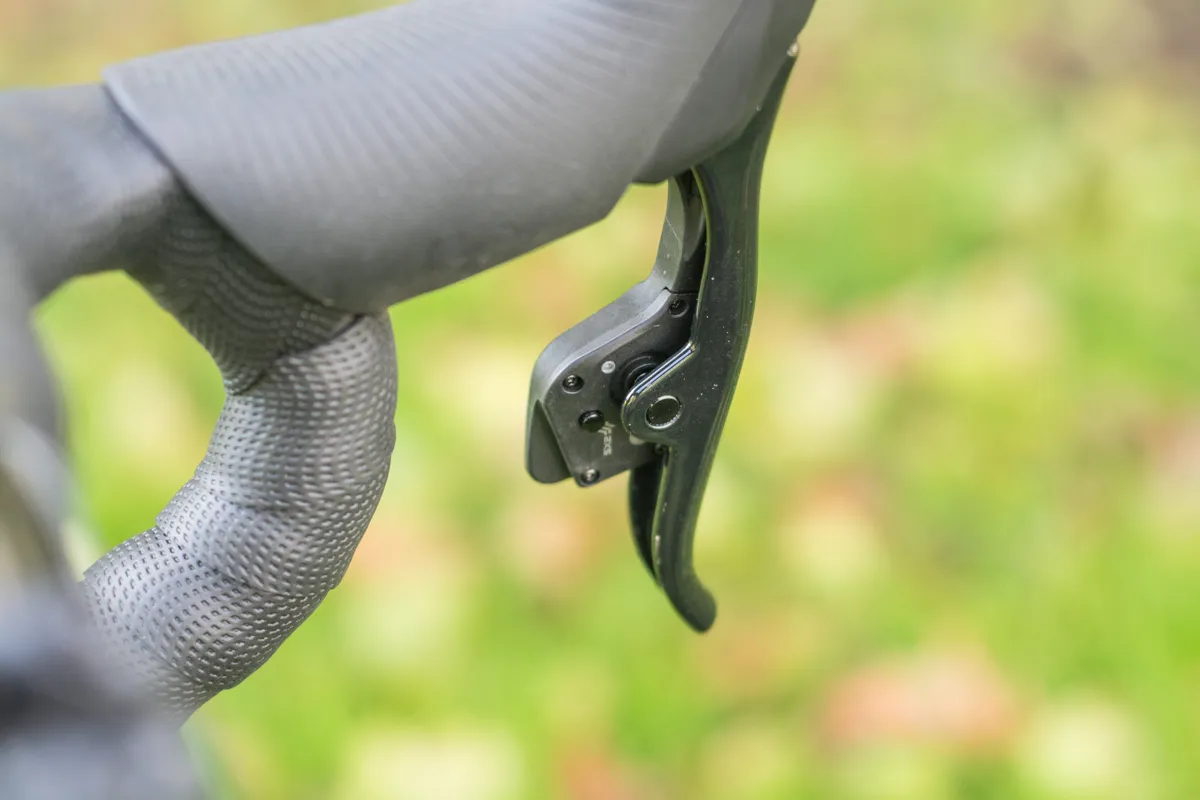
While the hoods appear chunky, I can’t fault the ergonomics. The brake levers and shift paddles are easily reached from both the hoods and the drops, with a slight flare helping your fingers fall naturally onto them.
It’s easy to tweak reach and brake point too, via adjustment bolts above and below the levers.
No shifting drama
Force eTap AXS shifting operates on the same principle as previous eTap groupsets, with a single large paddle on each shifter taking care of business.
By default, pressing the left paddle gets you an easier gear at the back, pressing the right one gets you a harder gear, and pressing left and right simultaneously shifts the front derailleur. You can reconfigure the shifting arrangements via the AXS app to operate things differently.
With no mechanical connection between levers and derailleurs, shifting is a digital experience, one that’s so uneventful it barely merits comment. It just works, with the chain snicking up and down the cassette quickly and accurately.
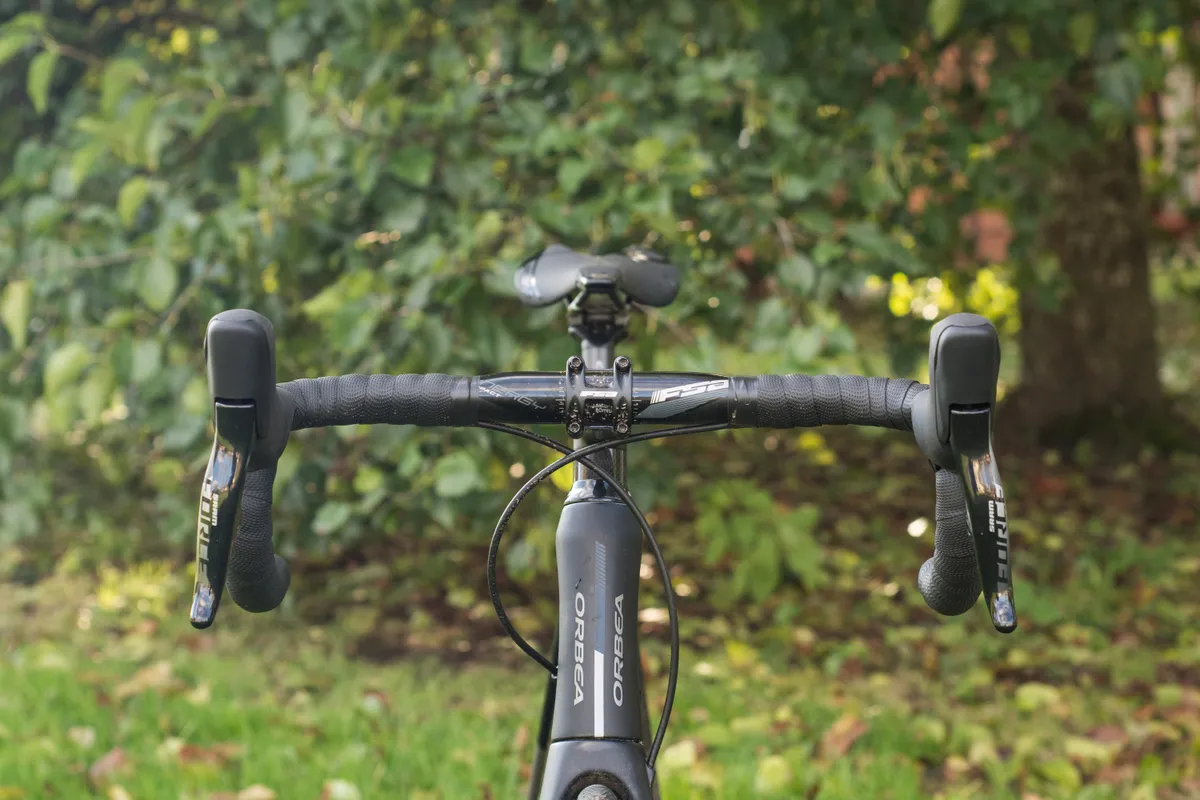
The shift paddles have a clearly defined click and you can hold them down to shift across multiple sprockets. By default, you can shift through all the gears in one go, but if you prefer to limit the number, you can set a cap in the AXS app.
Front shifting is very good too – this has never been a strong point of SRAM’s DoubleTap mechanical groupsets, but eTap just gets on with it.
Like Red, Force eTap AXS offers two enhanced shifting modes as an alternative to standard manual shifting.
In sequential mode, the rider simply shifts up or down, with the system taking care of front shifts at predetermined points. This creates a fairly idiot-proof system where you don’t have to think about your choice of gear much, but some riders won’t like having the decision of when to shift the front taken out of their hands.
In compensation mode, the rider shifts as normal, but front shifts are accompanied by an automatic rear shift, which effectively smooths the progression through the gears, eliminating the substantial jump of a normal front shift.
To my surprise, I found that I actually really liked compensation shifting. It’s true that in very specific circumstances – cresting a hill for instance and wanting to shift quickly into harder gears – it can be counterproductive because it shifts the rear in the wrong direction, but overall it makes for a very smooth shifting experience that still leaves you feeling like you’re in full control.
SRAM Force eTap AXS front and rear derailleurs
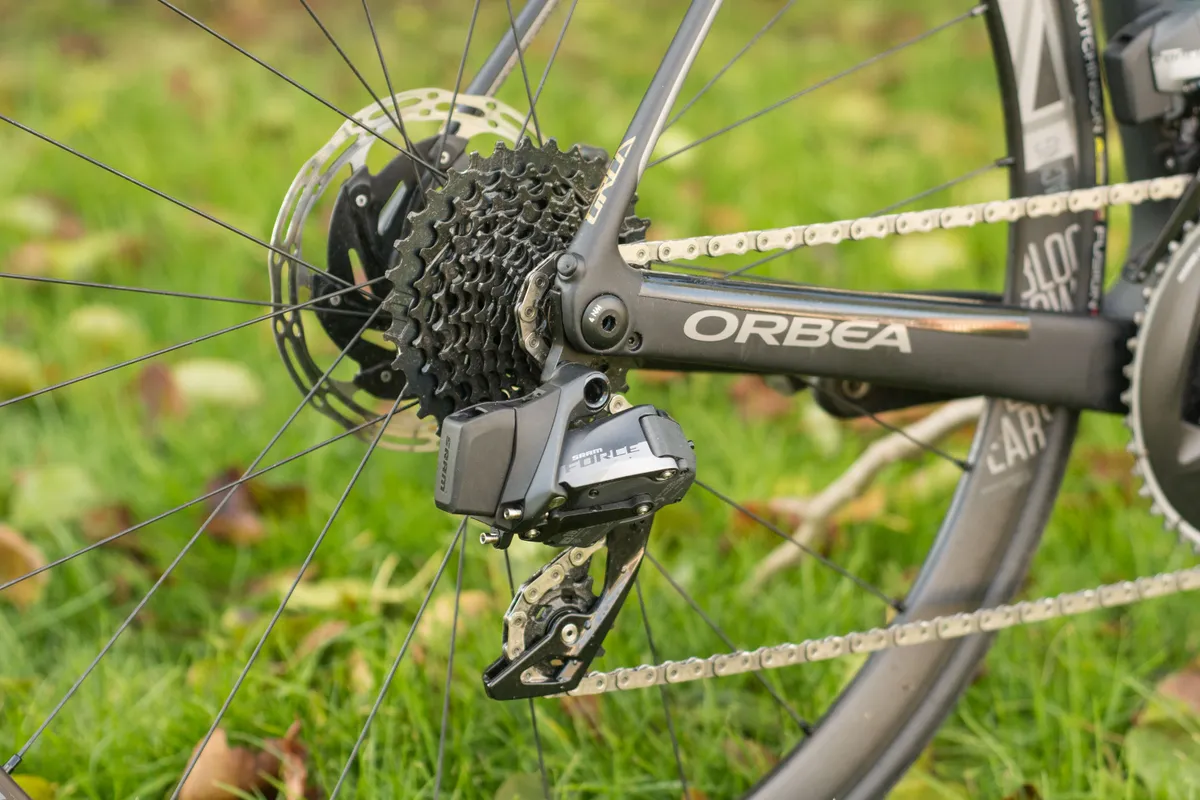
Battery life and practicalities
Being wireless, Force eTap AXS derailleurs run off of removable rechargeable batteries, the same ones used on the first generation Red eTap groupset and the current Red eTap AXS.
SRAM claims you’ll get around 20 hours of ride time or more from these, but that’s obviously subject to all sorts of variables including temperature and how frequently you shift.
My experience is that battery life is long enough, but it’s best to be proactive about charging after rides to avoid being caught out.
SRAM recommends removing the batteries and fitting the included terminal covers when the bike is being transported because the system is motion activated, meaning it will be live (and using a small amount of power) even though you’re not riding.
It’s worth doing this anyway because it makes the derailleurs less vulnerable to damage, as the covers don’t protrude the way the batteries do.
An advantage of the separate batteries is the ability to swap them on the fly. For really long rides you could carry a spare battery and, if you flatten one out on the road, you can always temporarily switch them if you’re running 2× (or you have an AXS dropper, which uses the same batteries).
Compatibility and tech
There’s just one Force eTap AXS rear derailleur at the time of writing, which means no compatibility worries when you’re speccing a groupset.
It also makes future setup changes less of a headache say, for example, if you want a 2× drivetrain now but you’re thinking of swapping to 1× down the line.
Having said that, the Force rear derailleur is limited to a maximum cassette sprocket size of 33t and the smallest Force 1 chainring is 36t.
If you keep things within the family (i.e. no SRAM mountain bike or third-party components), the lowest available gear in a 1× setup will be 36/33, which more adventurous riders likely won’t deem low enough.
The rear derailleur gets SRAM’s Orbit fluid damper at the pivot by the upper jockey wheel. This is designed to reduce chain slap without the resistance of a mechanical clutch because the damper doesn’t resist slow movements or lighter loads.
It’s hard to assess how effective this is as I tested the groupset on a road bike, where chain slap is less of a concern, but it’s an appealing feature for gravel and cyclocross builds, one my colleague Warren Rossiter praised when he rode gravel at the groupset launch.
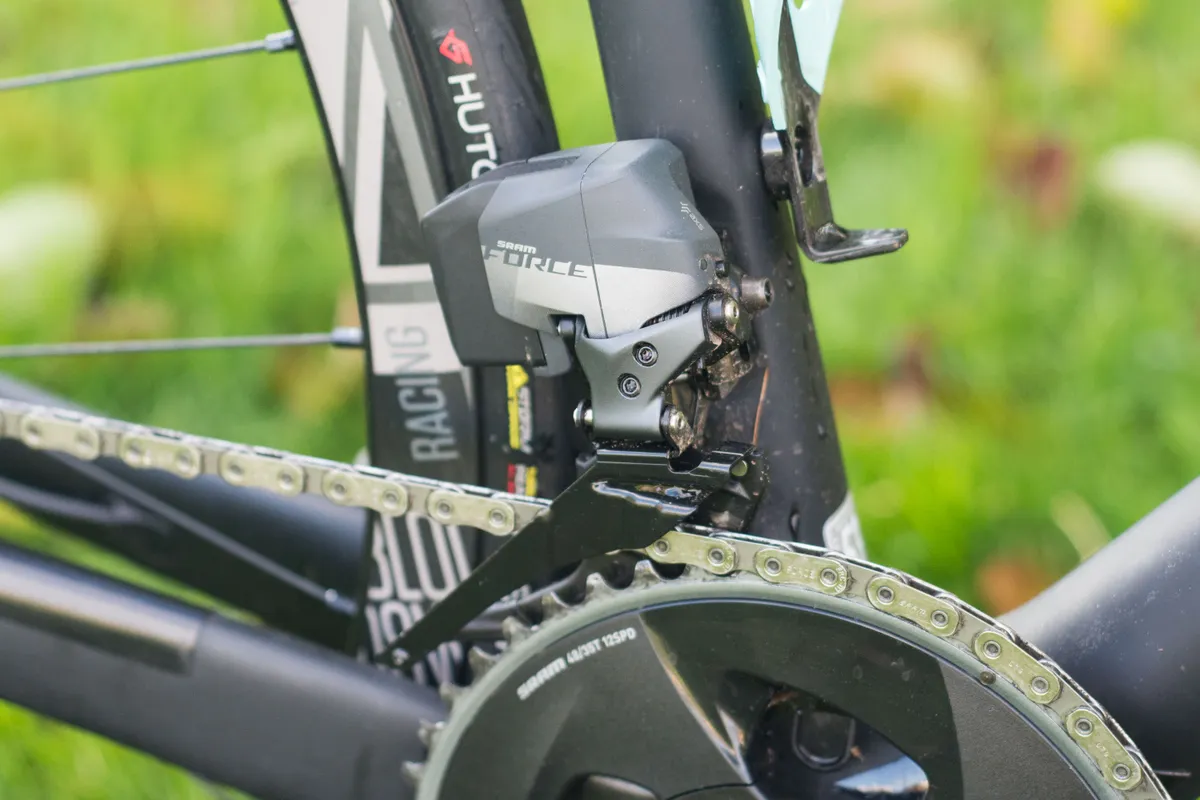
Like SRAM’s mechanical groupsets, the Force eTap AXS front derailleur features Yaw, meaning it rotates as it moves through its travel to maintain its alignment with the chain.
SRAM Force eTap AXS crankset
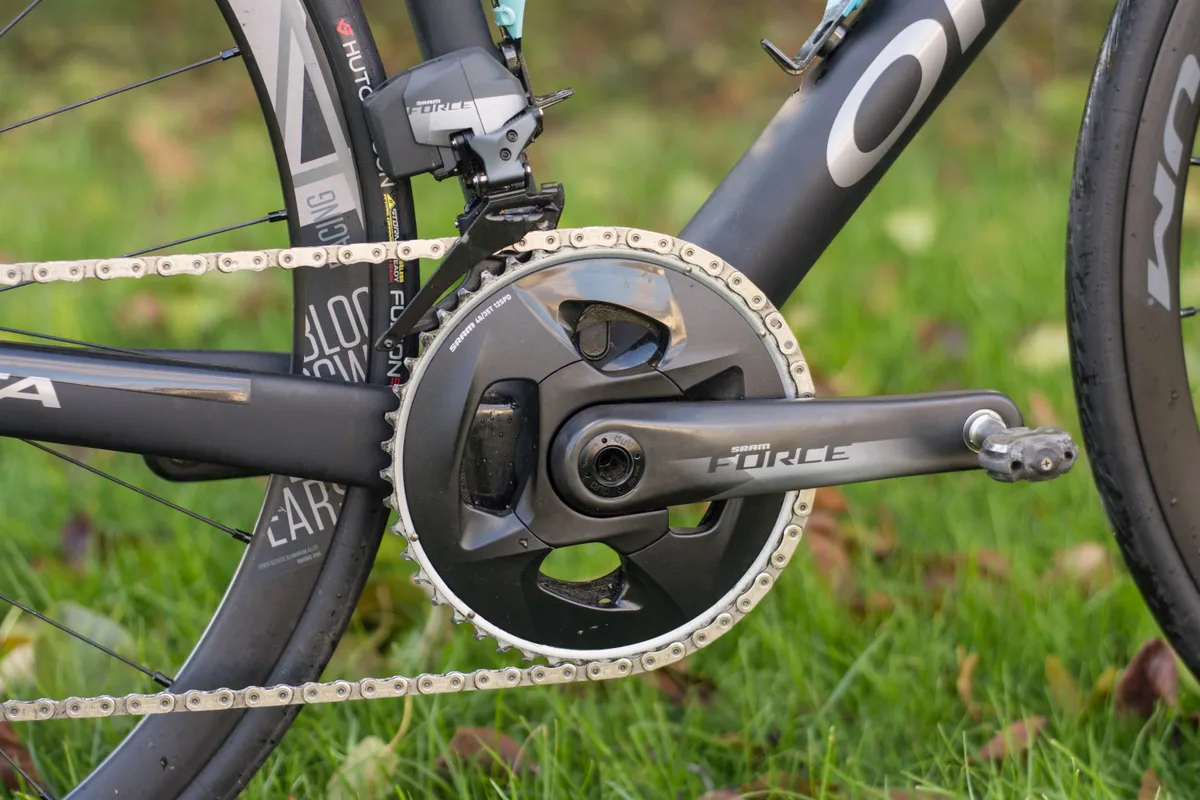
The crank is arguably the centrepiece of the groupset and your feelings about the overall aesthetic are likely to revolve around it.
Personally, I can’t help feeling that the new Force crank is a little bit cheap looking, with a muted finish that’s more plasticky than bling. This is in sharp contrast to the stunning Red crank with its machined one-piece chainring assembly.
Saying that, the Force design’s conventional chainrings can be replaced individually at considerably less cost, so there is a trade-off.
When SRAM launched Red eTap AXS, a new approach to gearing called X-Range came with it.
This replaces traditional double and compact crank ratios with more tightly spaced options and combines them with wide-range cassettes that start with a tiny 10t cog rather than the 11t to which we’ve grown accustomed.
At Force level, SRAM offers 46/33t and 48/35t double cranks. Riders wanting bigger rings will need to pony up for the Red-only 50/37t option, but I’d urge you to consider whether you really need a gear bigger than 48/10, bearing in mind that it’s only fractionally smaller than an old-school 53/11.
1× Force cranks offer rings from 36t up to 48t. Confusingly, SRAM refers to this crank as Force 1, but it’s a different crank to the previous generation Force 1, which is part of the brand’s 11-speed range.
By default, Force eTap AXS cranks use the newer DUB bottom bracket design introduced a couple of years ago, which is compatible with most frames.
SRAM also offers a 24mm spindle (GXP) variant to accommodate Trek BB90 frames and those with 70mm Italian bottom brackets.
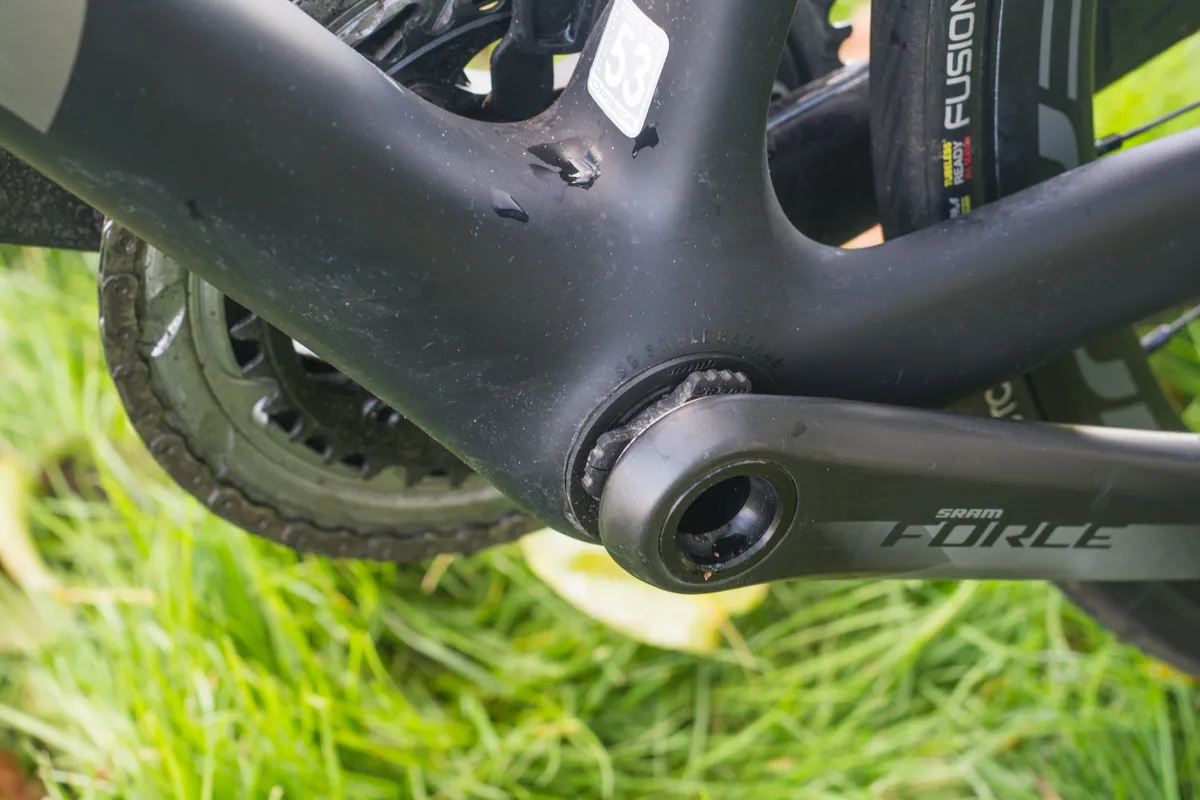
SRAM offers Quarq power meter versions of both the double and 1× cranks. These measure power at the spider apart from the 48t 1× option which is fully integrated, and takes a direct mount ‘aero’ chainring.
SRAM Force eTap AXS cassette
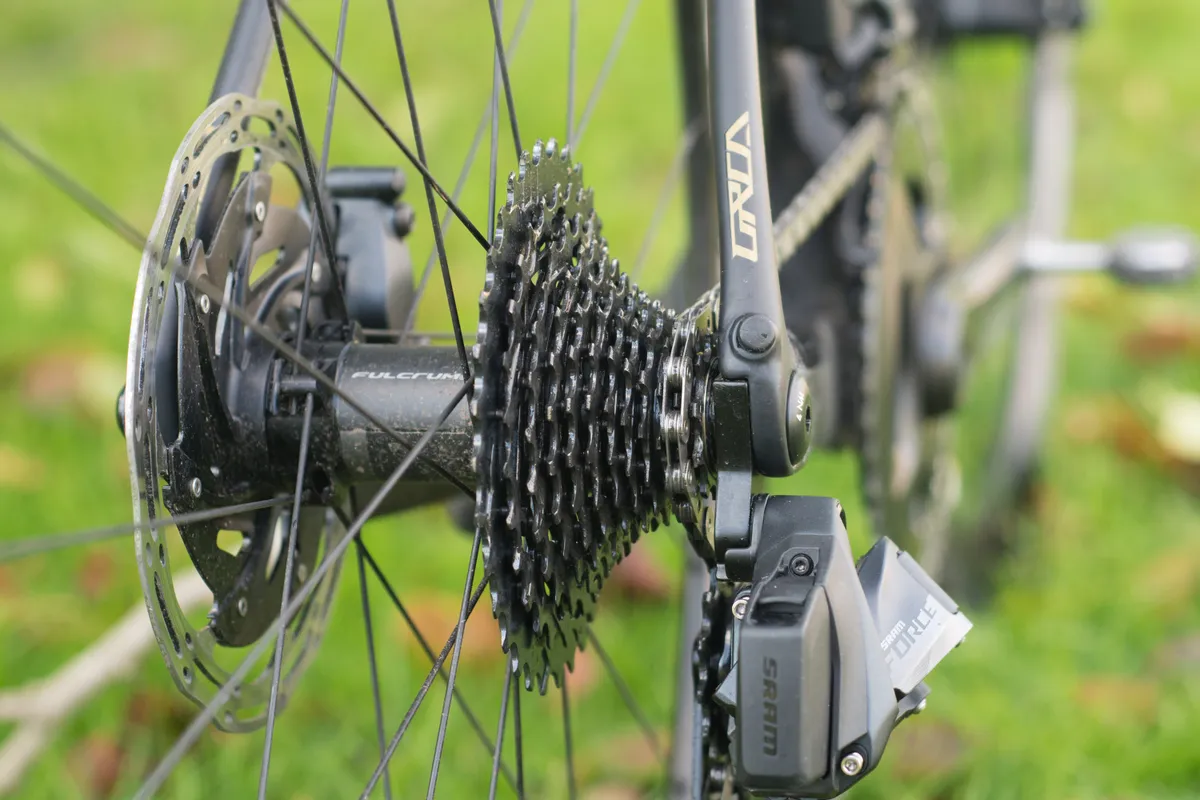
While Red uses a fearsomely expensive 12-speed cassette that’s machined from a single block of steel, the Force AXS XG-1270 uses a cheaper design, with the three smallest cogs machined from one billet, and the remainder pinned together.
While it’s much more affordable than the Red cassette, the XG-1270 is still an expensive cassette to replace. It retails at £170 / $185 and, at the time of writing, the cheapest one I could find online was £125.
As 12-speed road kit is so new, there’s no option to raid a lower-tier groupset for consumables.
SRAM’s 12-speed road cassettes require the XDR driver, the road version of the XD driver first launched with the brand’s 1× MTB drivetrains, and they’re not compatible with previous-generation Shimano-style freehubs.
This won’t matter if you’re buying a complete bike with Force eTap AXS, but it’s an important consideration when you’re upgrading an existing one because you’ll need to fork out for the driver, and not all wheels will accept one.
XG-1270 cassettes come in 10-26t, 10-28t and 10-33t ratios.
SRAM Force eTap AXS chain
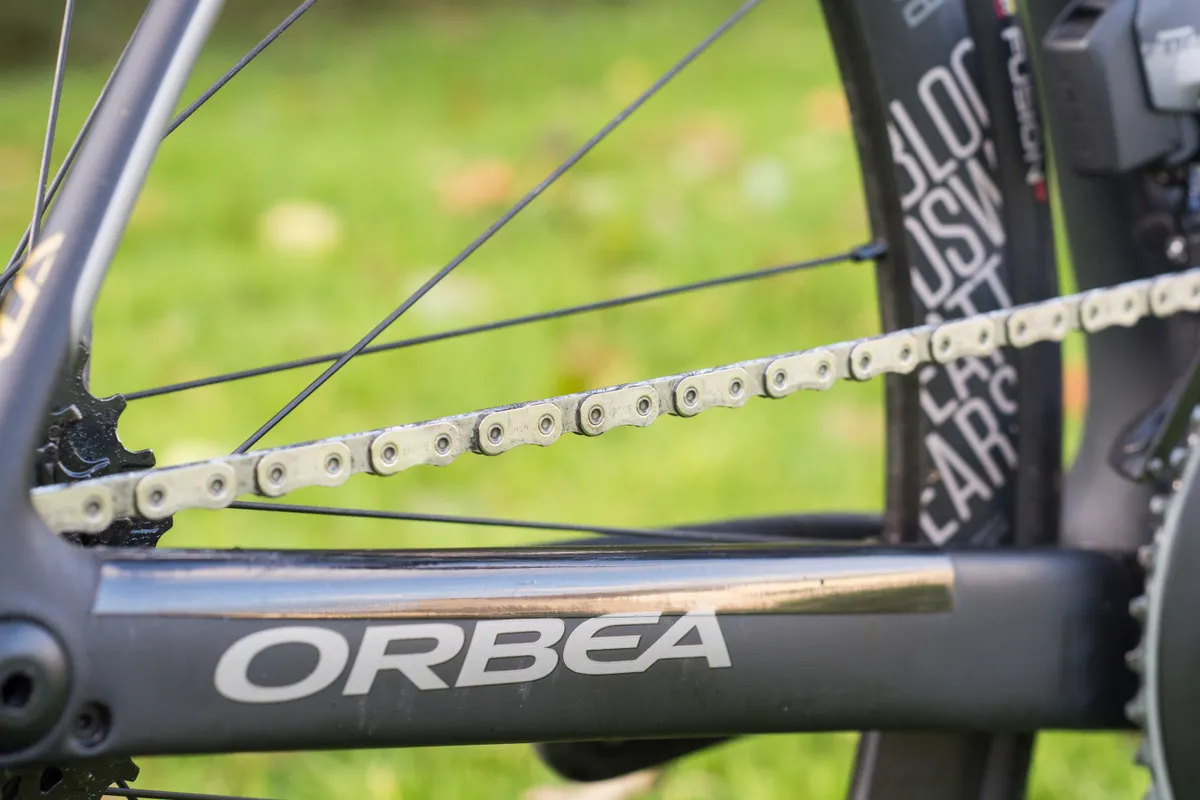
The Force eTap AXS chain uses the same flat-top chain design as Red, but gets solid pins rather than hollow ones, so it’s a little bit heavier at a claimed 266g against Red’s 249g for 114 links.
According to SRAM, the flat-top construction allows for a narrower chain and hence more clearance with adjacent cogs, without compromising on strength.
Officially, only Force AXS and Red AXS chains can be used with Force AXS cassettes – even using an Eagle chain is not allowed because, apparently, the dimensions are different.
As with the cassettes, this does mean you don’t have a lot of choice when it comes time to replace worn parts, although Force AXS chains are fairly inexpensive on the street in any case.
SRAM Force eTap AXS brakes
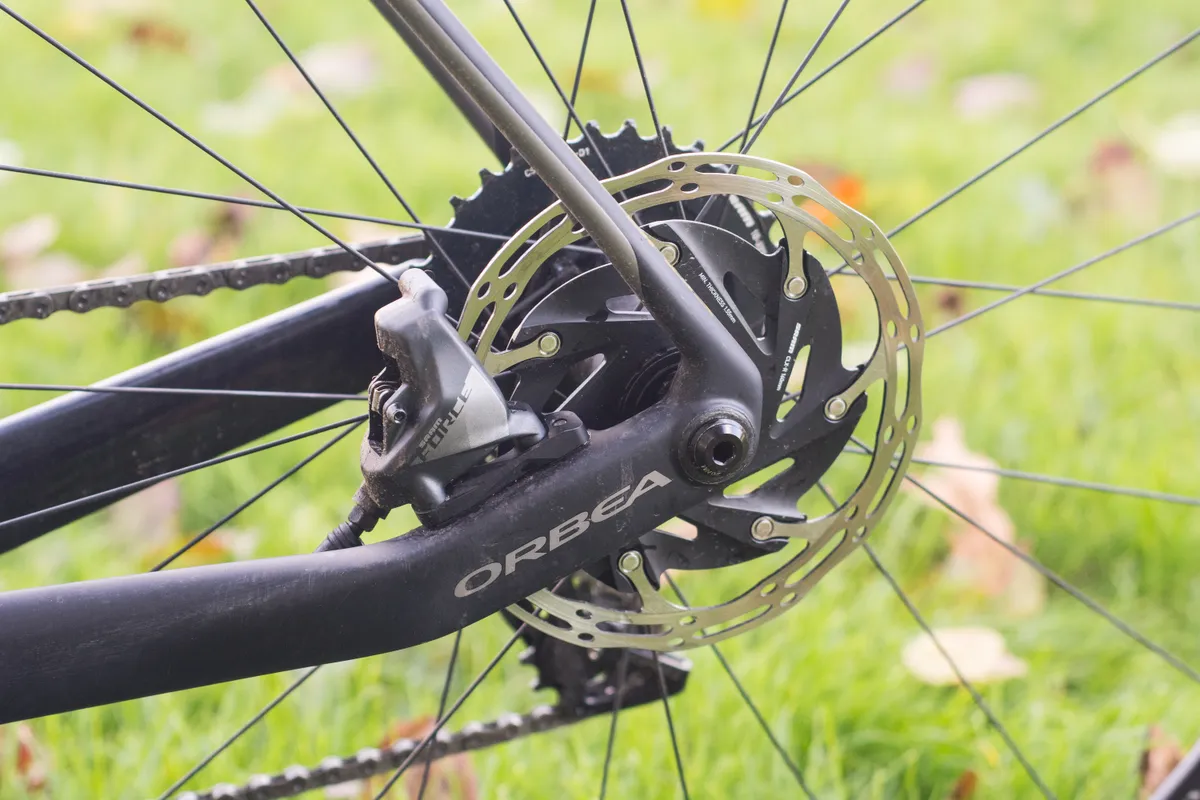
If you’ve used SRAM’s road disc brakes before, Force eTap AXS’s braking will feel completely familiar. It’s well modulated with more than enough power whether you’re braking from the hoods or the drops.
I can’t comment on the rim brake version because I haven’t tested it, but it’s worth noting that SRAM doesn’t offer groupset-matching direct-mount calipers, so you’re stuck with the somewhat underwhelming non-series S-900 brakes if your frame demands them, or a third-party alternative.
For the disc calipers, Force eTap AXS is flat mount only, something to bear in mind if you’re building your own bike. This is a key difference from Red, which still offers post-mount calipers as an option.
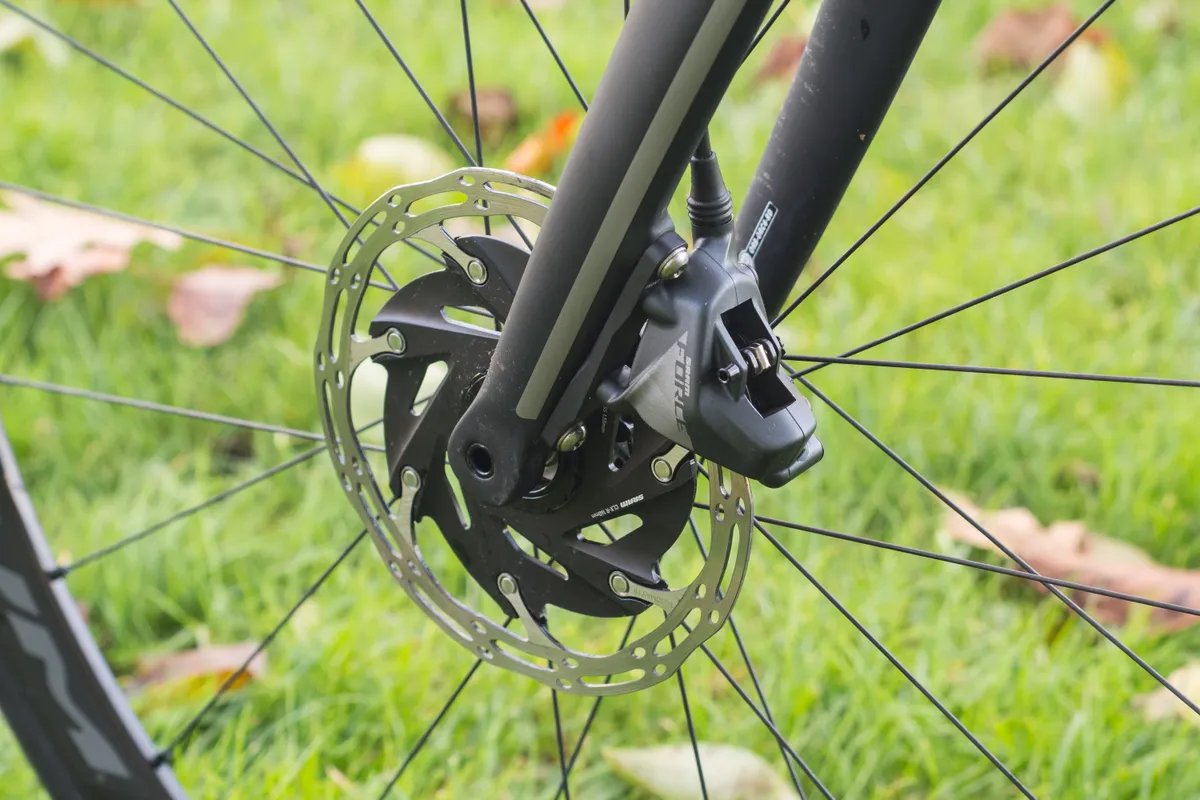
Generally speaking, flat-mount calipers are incompatible with older post mount and IS frames, although some can apparently be made to work with aftermarket adaptors sold by AS Solutions, seemingly the only brand offering these.
Incidentally, SRAM hydraulic brakes use DOT5.1 brake fluid, which requires careful handling in the workshop when it comes time to bleed your brakes.
SRAM Force eTap AXS connectivity and the AXS app
While you can set up and use the groupset without ever connecting it to external devices, the AXS phone app allows some useful customisation.
SRAM makes life easy when it comes to connectivity because the functionality is built-in. You don’t need to add extra hardware, you simply pair your components directly with an Android or Apple device with the AXS app installed.
The app lets you assign functions to switches (for example, if you want a non-standard shifting arrangement) and choose which of the enhanced shifting modes you want activated when you press the relevant button out on the road.
You can also customise the behaviour of these modes and keep an eye on battery life.
SRAM Force eTap AXS weight
According to SRAM, a Force eTap AXS HRD 2× groupset weighs 2,815g with 48/35t chainrings, 175mm cranks, a DUB BSA bottom bracket, a 10-28t cassette and 160mm rotors front and rear.
This is a penalty of 294g over the equivalent Red eTap AXS setup and an estimated 190g more than a comparable Shimano Ultegra setup.
A similar 2× rim brake Force eTap AXS setup weighs a claimed 2,453g, which is 352g more than Red.
SRAM Force eTap AXS price
I’ve quoted SRAM’s RRP for a complete 2× groupset but it’s worth pointing out that this number may not mean much in the real world.
Groupsets from all brands are routinely discounted, and the precise component configuration you choose will also affect the price.
Be aware when shopping around that many retailers offer partial groupsets, for example bundling the levers, brakes and derailleurs together, but not including the cranks, chain and cassette.
At the time of writing, the best online price for a complete Force eTap AXS 2× groupset I could find was £1,540, compared to £2,140 for Red eTap AXS.
SRAM Force eTap AXS verdict
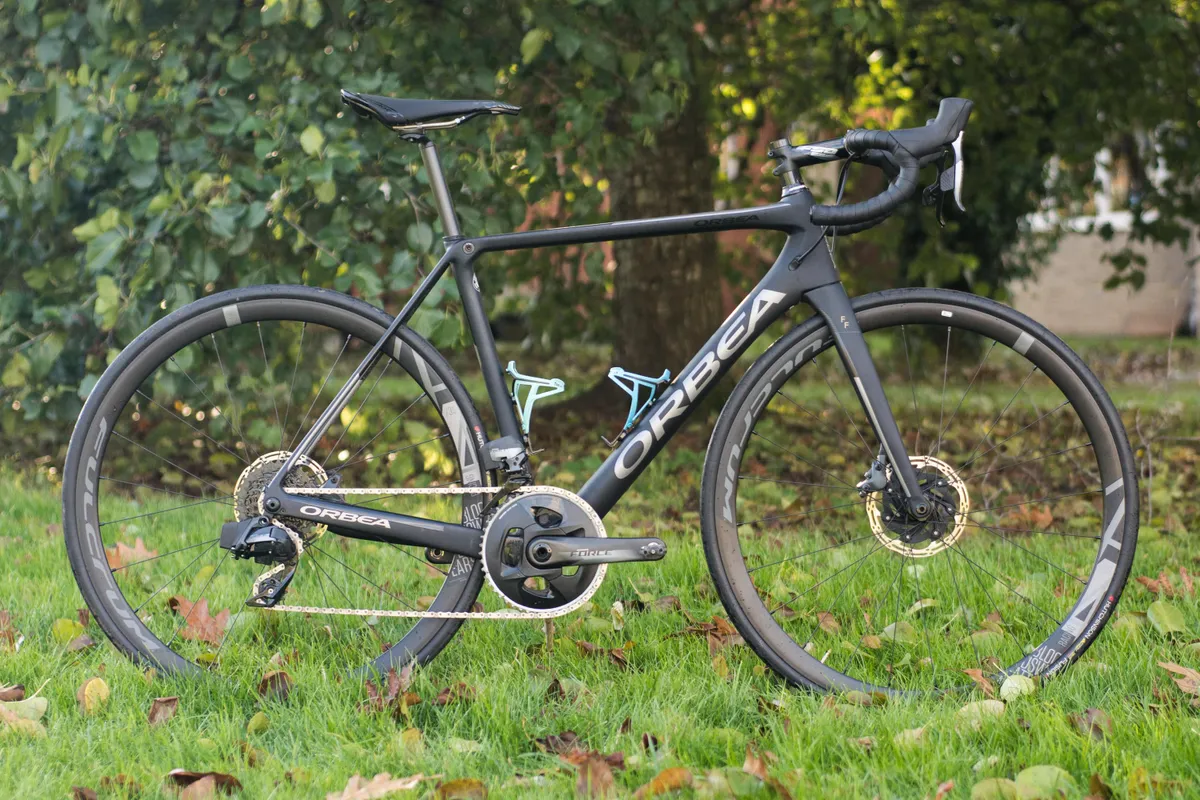
SRAM deserves praise for producing a more affordable wireless groupset with really well thought-out gearing options that will cover the needs of most riders, but the lower end is slightly lacking if you stick with road AXS components only.
The complete Force eTap AXS package works really well and is easy to live with.
As it’s wireless, it also makes setup incredibly straightforward if you’re building your own bike. There are no gear cables to route inside your frame, although you’ll still need to deal with the hydraulic hoses, of course.
If you want a wireless groupset, Force eTap AXS is the cheapest option on the market, and it’s vastly more affordable than the flagship Red groupset.
Saying that, Force is still a lot of money if you’re buying the groupset alone, particularly compared to rival Shimano’s equivalent groupset Ultegra Di2.
Personally, I’m not sold on the looks of Force eTap AXS, but that’s highly subjective. In every other respect it’s a very impressive set of components with a great deal to recommend it.
SRAM Force eTap AXS vs. Ultegra Di2
Force eTap AXS’s obvious rival is Shimano’s Ultegra R8050/8070 Di2 groupset, which offers comparable options in a slightly more affordable and lighter package, but of course isn’t wireless.
We’ve done a detailed head-to-head test of these two groupsets, which you can read here. There’s no clear winner between the two, though, because there are good reasons to choose one or the other depending on your needs.
Product
| Brand | sram |
| Price | 2548.00 EUR,2274.00 GBP,2678.00 USD |
| Weight | 2815.0000, GRAM () - Claimed |
| br_whatWeTested | 2× HRD groupset with 48/35t 170mm cranks, 10-33t cassette, 160mm rotors |
Features
| br_crankOptions | double |
| br_speed | 12 |
| br_brakeType | hydraulic_disc |
| br_brakeType | rim_brake |
| Features | Fully-wireless, electronic 12-speed groupset Hydraulic disc brake and mechanical rim brake options New crank and cassette ratios optimised around extra gear and cassettes with a 10t cog Designed for 1× or 2× XDR driver in place of a conventional freehub Shifting via one paddle on each lever Removable rechargeable batteries on derailleurs, coin cells in shifters Customisation and battery monitoring available via phone app (Android or iOS) |
| br_cassetteOptions | 10-26t, 10-28t, 10-33t |
| br_chainringOptions | 48/35t, 46/33t |
